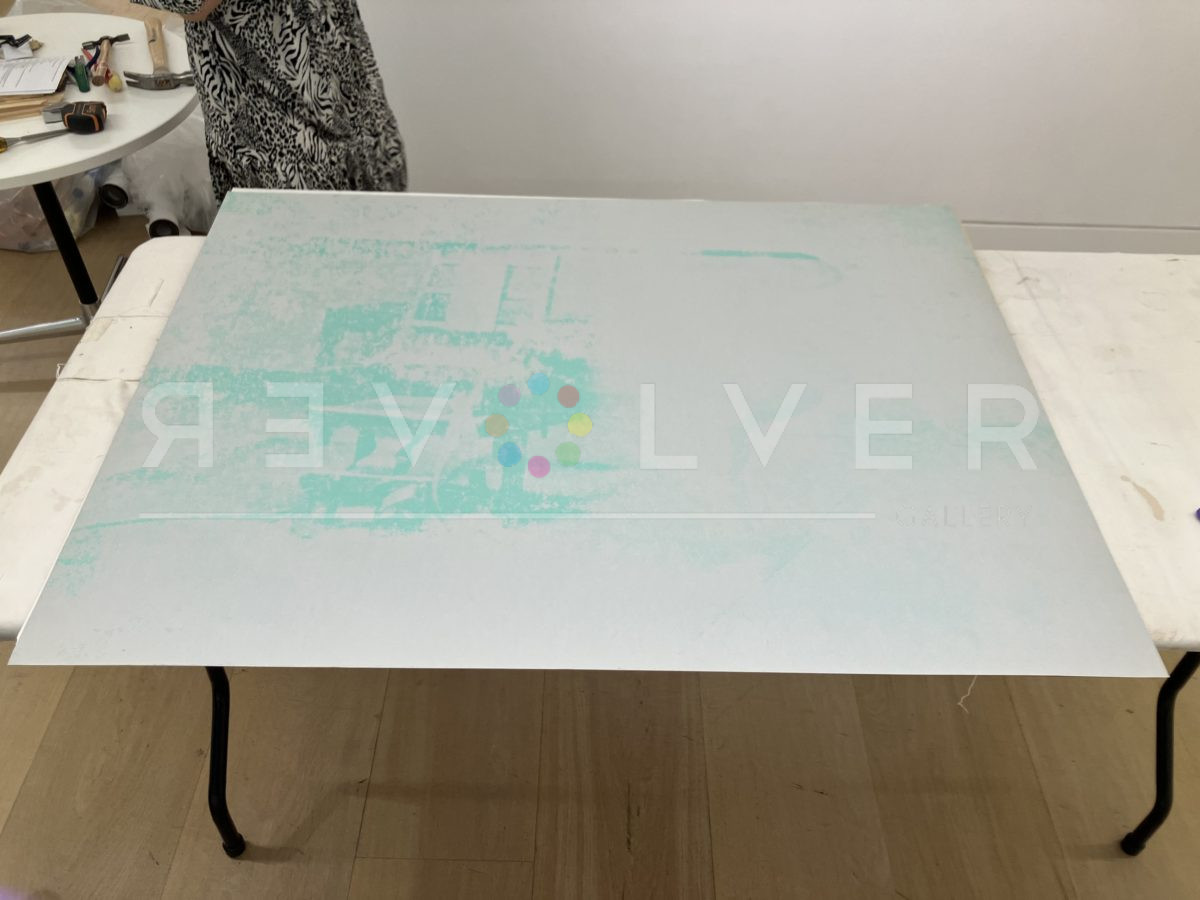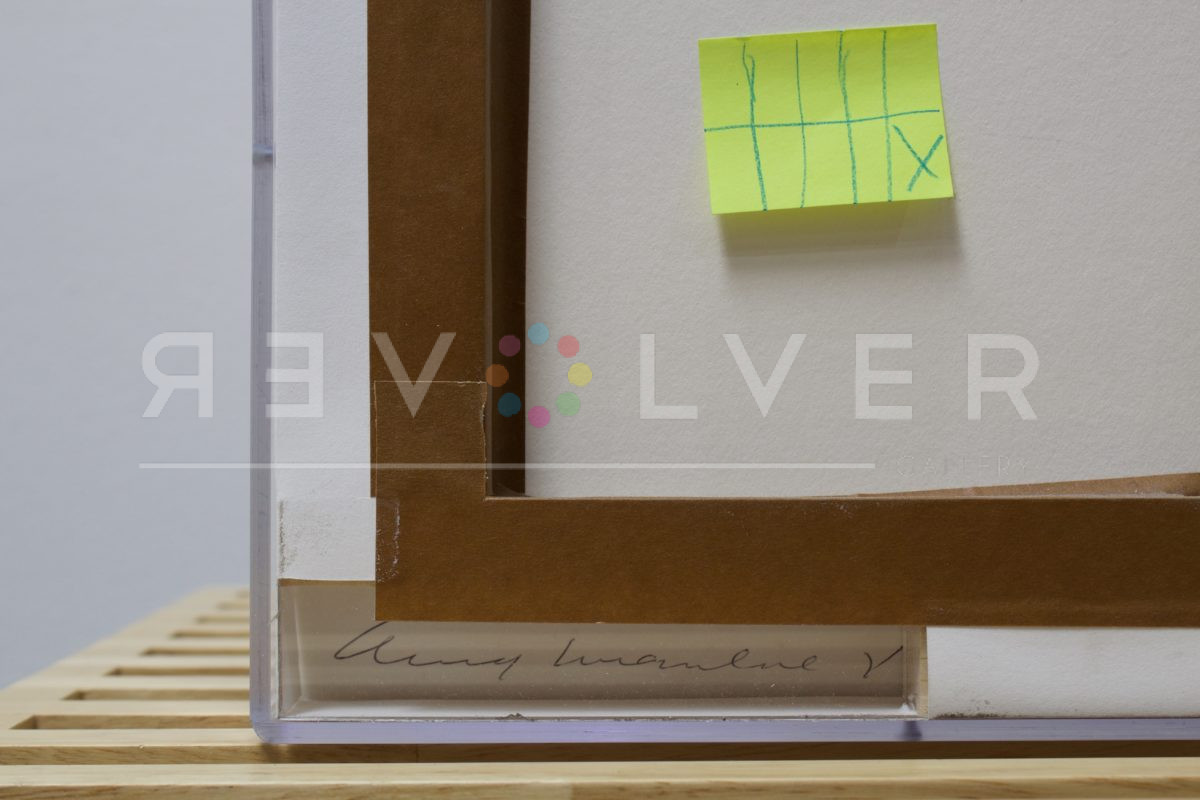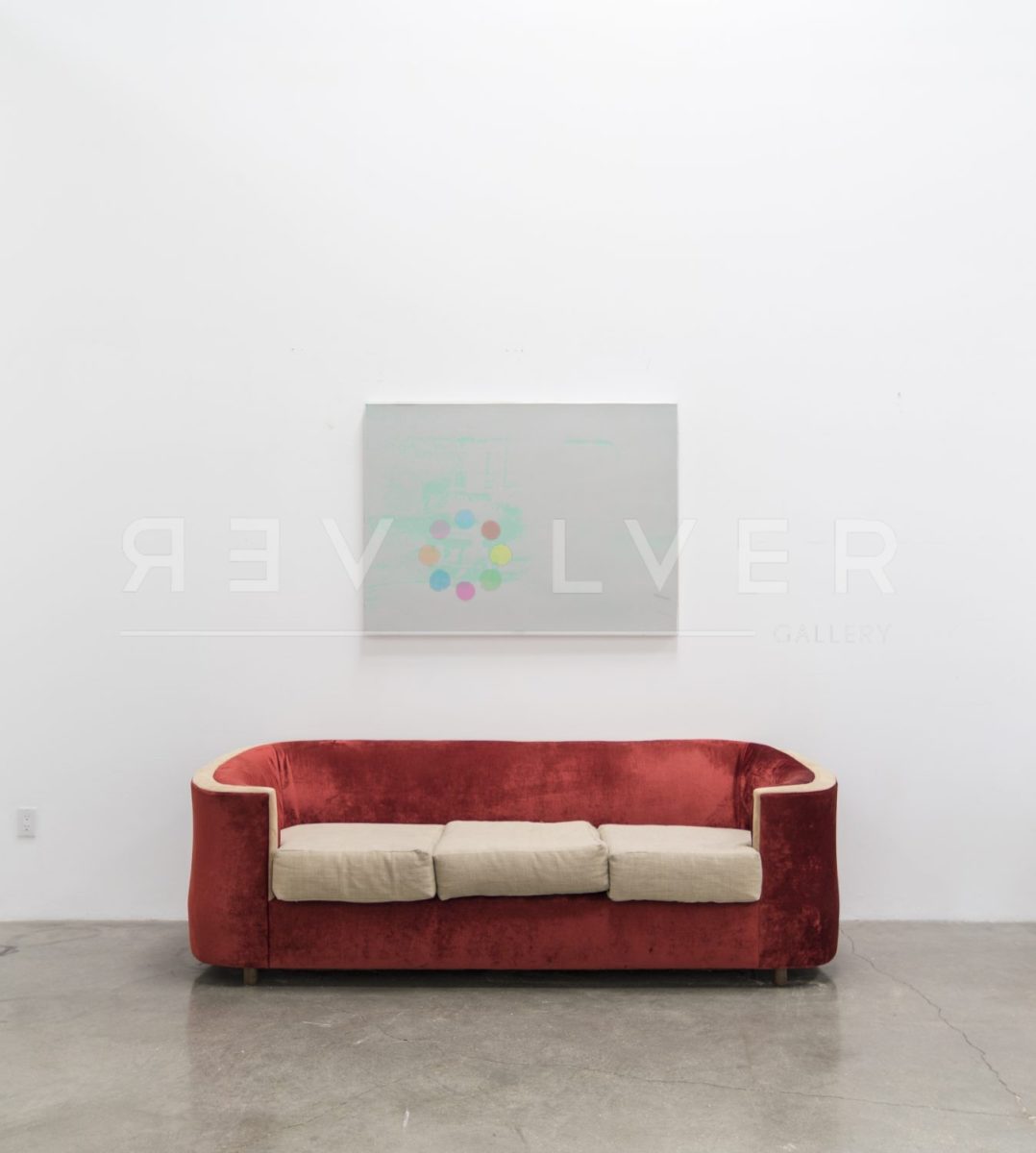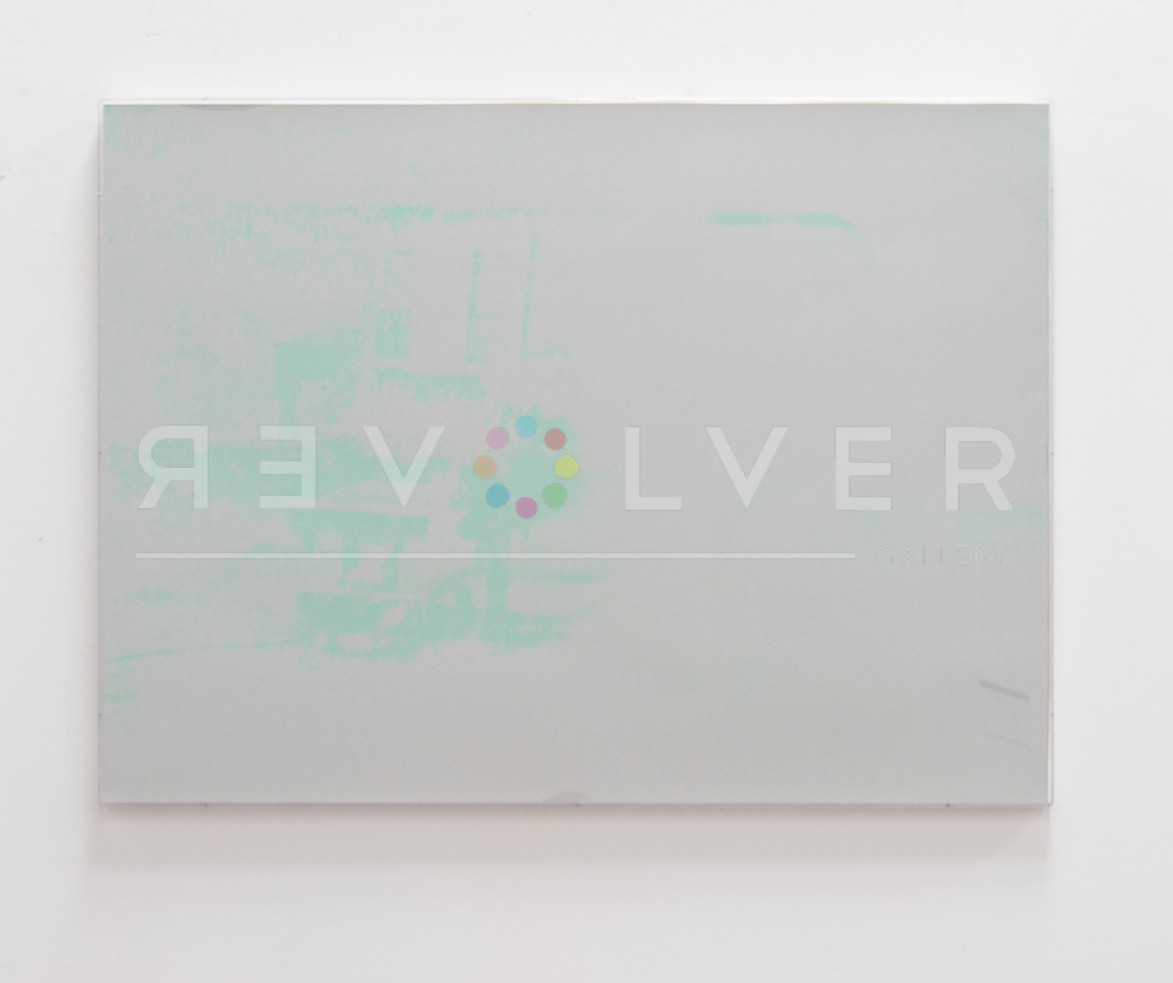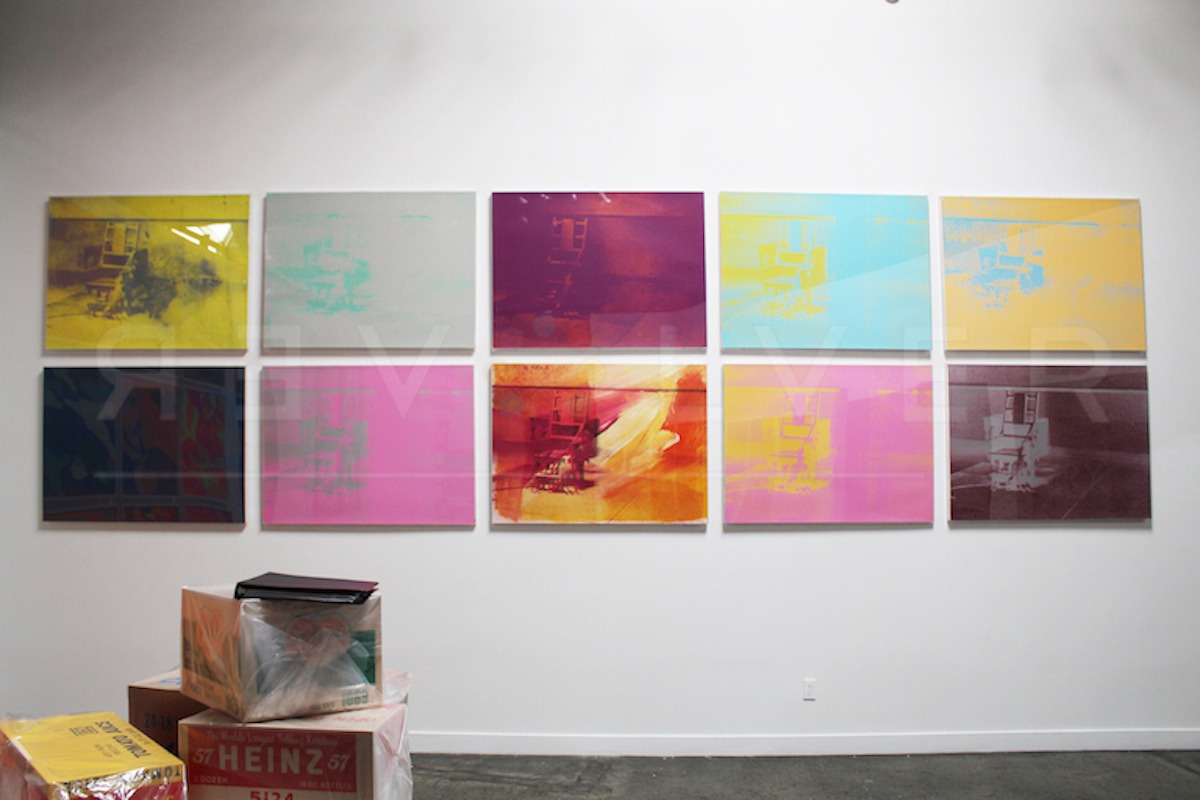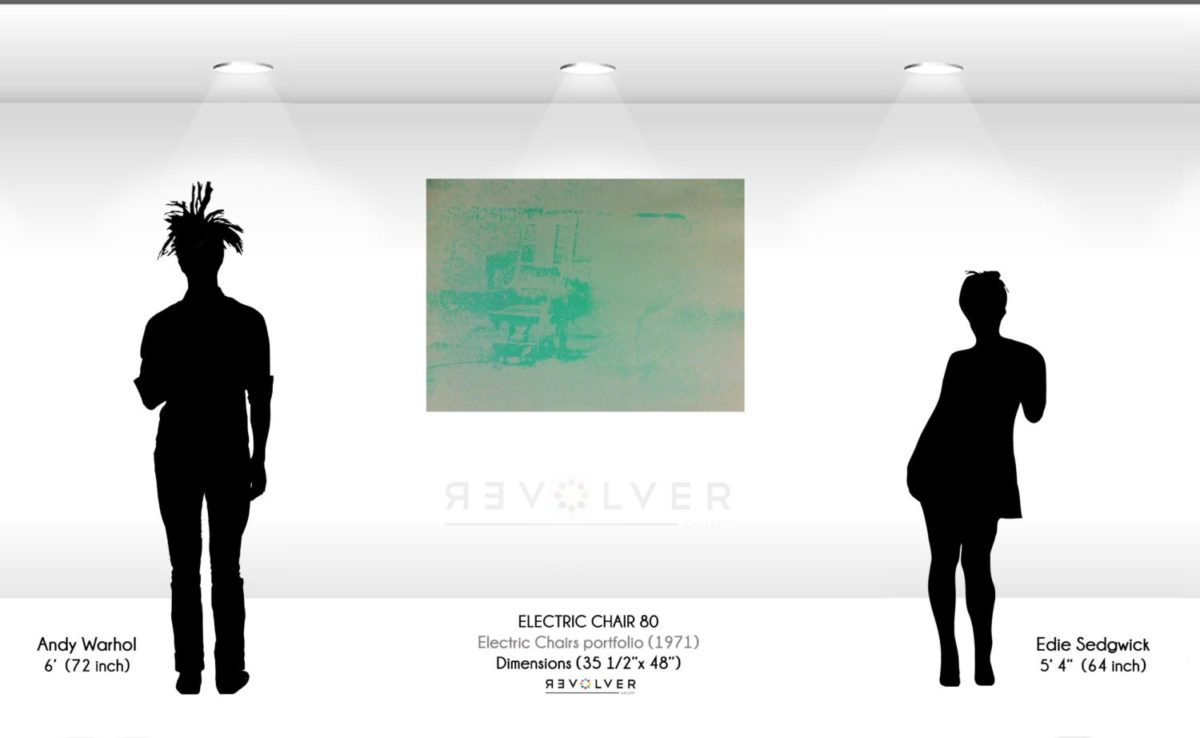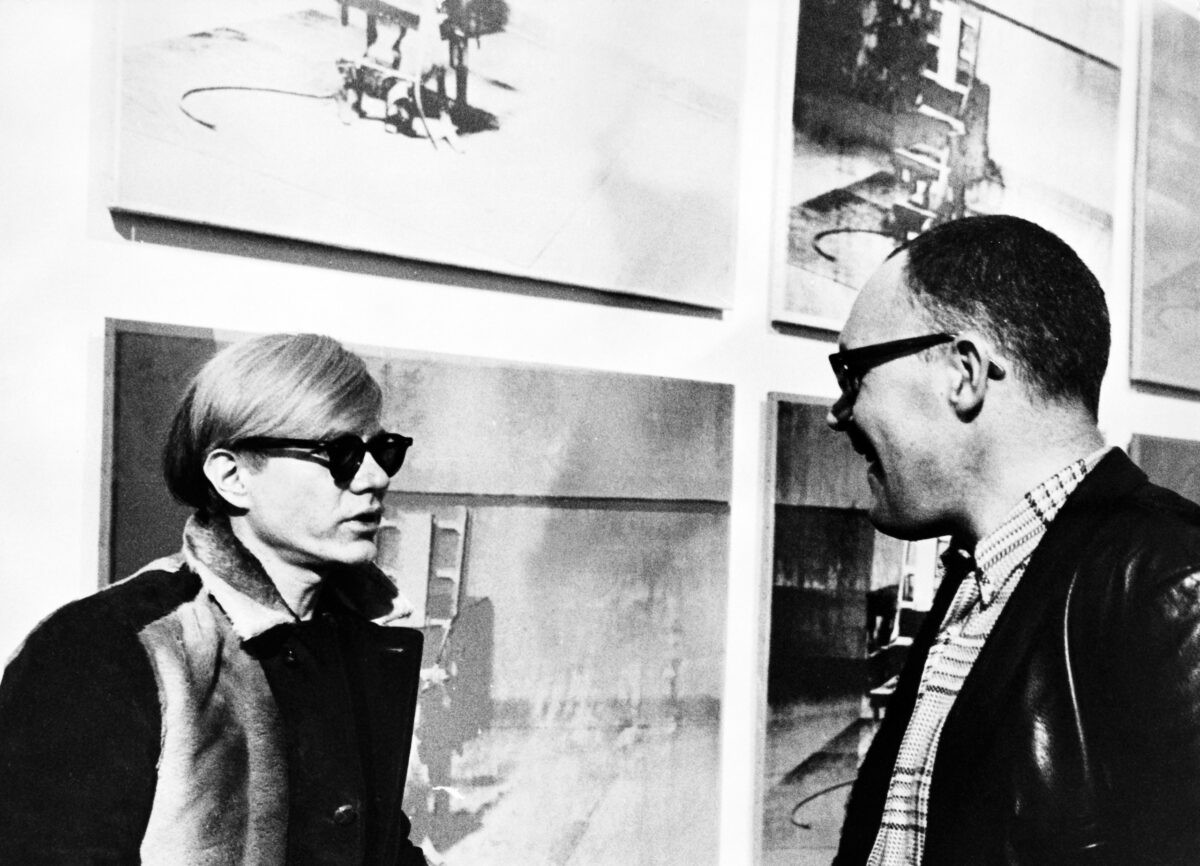Electric Chair 80 is a screenprint by Andy Warhol from the artist’s Electric Chair (1971) portfolio. The electric chair image originated in 1964 as a part of Warhol’s Death and Disaster series, where the artist highlighted the redundant presence of death imagery in the media. The series was at first taken to be too violent in its approach. However, it became increasingly apparent that the images were appropriations of pictures already used by media outlets. By reproducing the images, devoid of their context, Warhol reflected tragic events back to the public. Notably, the complete Electric Chairs series from 1971 ranks amongst Warhol’s most valuable portfolios ever sold.
Warhol sourced the image of the electric chair from the World-Wide Photo Agency, who distributed the image in 1953. It shows the death chamber at Sing Sing prison in New York. This particular photo excludes a line of pews that allowed an audience to view the disturbing spectacle. By choosing this image, Warhol removes the physical presence of the viewer, allowing anybody into Sing Sing Prison’s execution chamber. The prison conducted its last two executions by electrocution during the completion of Warhol’s first Electric Chair painting. The debate over the death penalty reached its peak in the 1960s, making Warhol’s images even more controversial.
The repetition of death imagery in the Death and Disaster series does not make state manufactured violence more visible, but rather nullified to the absolute. True to the intent of capital punishment, nothing is to be gleaned from the initial act of the execution. Instead, it acts as a symbolic reification of state power beyond the chamber. Warhol’s repetitions nullify the symbolic weight held within this act.
The greatest appeal to the 1971 Electric Chair portfolio is that it’s the final evolution of Warhol’s keen interest in the Sing Sing electric chair. The addition of brush strokes, multiple layers of paint, and the altered composition of the chair make the Electric Chair portfolio a matured work. The incorporation of the colorful glamour of Marilyn Monroe, the blankness of Campbell’s Soup Cans, and the newsflash dramatics of Flash into a single series makes these prints a pop-art chimera.
Electric Chair 80 is one of the more obscured prints in the portfolio. The whiteout background allows the contrasted green shadows to emerge in a haunting fashion. The chair appears to be glowing or emitting radiation instead of electricity. The blankness of the print is all the more abstract once one realizes what the image depicts. There is a great sense of alterity in all of Warhol’s series, but Electric Chair 80 feels different. It is one of ten repetitions, yet remains completely detached from the rest of the portfolio due to its emptiness. The print verges on minimalism but in tandem with the rest of the portfolio, it is clear that much is to be inferred.


